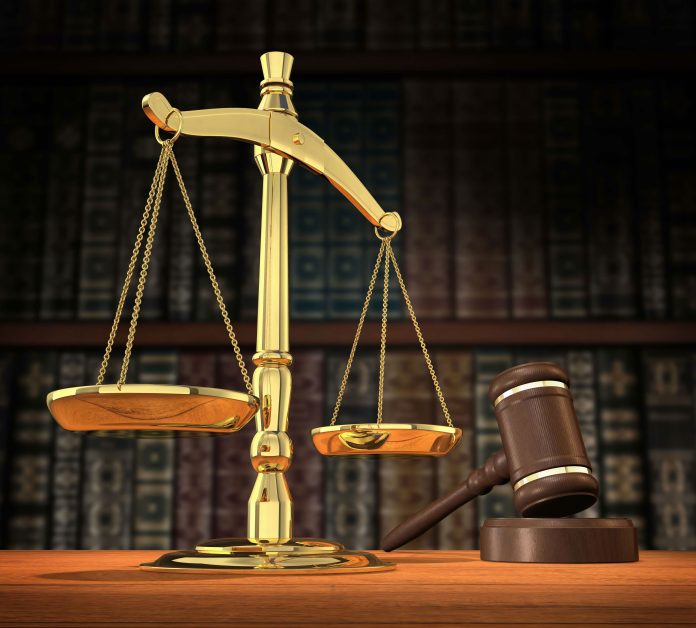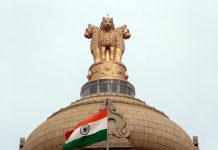This article is written by Ishan Arun Mudbidri and Ayush Tiwari. This article talks about the independence of the Indian judiciary.
This article has been published by Sneha Mahawar.
Table of Contents
Introduction
The independence of the judiciary is one of the central elements of India’s democratic system. It is a unique feature that separates India from other countries. However, time and again, the independence of the judiciary has been challenged by external or political influence and this has raised some doubts on the provisions mentioned in the principle of separation of powers. Hence, this article talks about some of the recent instances, where the Independence of the Indian Judiciary has been challenged.
The Constitution of India guarantees independence to the judiciary. However, protecting judicial autonomy begins with the Constitution governing the court. In the end, the independence of the judiciary rests on the creation and support of an overall favourable environment by all state institutions, including the judiciary and the general public. The judiciary’s independence must also be continuously protected against unforeseen circumstances and shifting social, political, and economic circumstances; it is too sensitive to be left unprotected.
Independence of judiciary in India
Due to the prolonged British Raj and then a newly formed democracy, there was always a concern on how the judiciary in India should function. Hence, an independent judiciary was the answer to this question. For the prosperity and stability of the country, the rule of law is very important. An independent and impartial judiciary can establish a stable rule of law. Independence of judiciary means, the power of upholding the rule of law, without any fear or external influence, and maintaining effective control over the actions of the government. The independence of the judiciary is part of the basic structure of the Constitution. The independence of the judiciary ensures that the powers of the Parliament, the State legislature, and the Executive, are properly distributed and there is a balance between the demands of the individuals and norms of the society. The legal system does not have any ideology and political interests and is often rendered neutral.
Few case laws which explain the concept of independence of the Indian Judiciary
In the case of S.P Gupta v Union of India (1982), the court held that the judges should be fearless and should uphold the principle of rule of law. This is the basis of the concept of independence of the judiciary.
In the case of Supreme Court Advocates-on-Record Association & Anr. Vs Union of India (1993), the court observed that the independence of the judiciary is necessary for democracy to function effectively. The court further concluded by stating the powers and rights can never be hampered as long as the judiciary remains independent from the executive and the legislature.
Constitutional provisions on an independent judiciary
Around the world, the independence of the judiciary has been a debate. However, as India has a written Constitution, the independence of the judiciary is mentioned in writing, hence, making this concept even more important. Independence of the judiciary means that the legal fraternity has all the powers to make their own decisions, without any external influence. The judiciary is not only important in dispensing justice but also, in solving disputes arising between the States. This can only be done if the judiciary is free from all outside pressures. Judges play one of the most important roles in the legal system. Hence, independence of the judiciary also means independence of the judges. This means that the judges can submit their reports and take decisions without any influence, they are not dependent on the Government, and they are not dependent on any of their superior judicial officers. Part 5 of the Indian Constitution deals with the Union Judiciary. The independence of the judiciary starts with the appointment of the judges in the courts. Article 124 to Article 147 deal with the appointment of the Supreme Court judges and, Article 214 to Article 231 deal with the appointment of judges in the High Courts. Further, the Subordinate courts are mentioned under Article 233 to Article 237 of the Constitution. The highest subordinate court is that of the court of District Judge. The framers of the Constitution divided the judiciary, legislature, and the executive into three separate organs, so as to ensure that each organ will perform its roles independently and not interfere with the functioning of the other, and also that this will help in justifying the principles mentioned in the Preamble.
The meaning of independence with respect to the judiciary
Even after years of existence, the meaning of the judiciary’s independence is still unclear. Our Constitution’s Articles 124 to 147 deal with the appointment of Supreme Court judges and Articles 214 to 231 deal with the appointment of judges in the High Courts, but our Constitution only mentions the judiciary’s independence; it makes no mention of what such independence truly entails. Judiciary’s independence includes both the independence of the judicial institutions and the independence of the judges who make up its body. However, judicial independence does not mean lack of responsibility or arbitrariness. The country’s democratic political system includes the judiciary. As a result, it must answer to the country’s citizens, the Constitution, and democratic values. The theory of the separation of powers appears to be the concept’s foundation and focal point. Therefore, it largely refers to the judiciary’s independence from the executive and legislative branches. Judiciary’s independence goes beyond just establishing a separate institution free from the oversight and influence of the government and the legislative branch. The fundamental goal of the judiciary’s independence is that judges must be able to resolve a dispute that comes before them in accordance with the law, free from other influences. Because of this, every judge’s independence is a component of the judiciary’s overall independence.
Independence of the judiciary and the rule of law
French theorist Montesquieu contended that a framework in which various authorities exercised legislative, administrative, and judicial authority while all being bound by the rule of law was the best way to avoid despotism. He saw despotism as a looming danger to any government that was not already despotic and the principle of separation of powers refers to this theory. Judicial review is one of the strongest strategies courts use to defend the rule of law. Judicial review refers to the court’s authority to assess the legality of both government executive orders and laws established by the legislature. By employing this authority, the court maintains control over the legislative and executive branches.
The case of Marbury v. Madison (1803), in which Chief Justice Marshall established that the court had the authority to evaluate legislation adopted by the legislature, can hence be credited for giving birth to the concept of judicial review. However, a lot of academics have criticised this idea for a variety of reasons, including judicial authoritarianism, excessive dependence on judges, being undemocratic, and being a barrier to a strong democracy.
Independence of the judiciary : international perspective
The Basic Principles on the Independence of the Judiciary, which were ratified by the General Assembly in resolutions 40/32 on November 29, 1985, and 40/146 on December 13, 1985, were approved by the 7th United Nations Congress on the Prevention of Crime and the Treatment of Offenders, held in Milan from August 26 to September 6, 1985. The Universal Declaration of Human Rights (Article 10) and the International Covenant on Civil and Political Rights, among other human rights documents, both established the idea of judicial independence (Article 14). Additionally, there are a number of UN standards, particularly the Bangalore Principles of Judicial Conduct from 2002 which was accepted by the UN General Assembly.
The United Nations Charter, the Universal Declaration of Human Rights, the International Covenant on Civil and Political Rights, the International Covenant on Economic, Social and Cultural Rights, the Organisation and Administration of Justice in Every Country, and other basic principles developed to aid the Member States in their task of securing and promoting the independence of the judiciary should be taken into consideration and respected by governments within the framework of their national legislation and practise and brought to the attention of judges, lawyers, members of the executive, and the legislative.
Constitutional provisions (more content for existing heading)
Our constitution has several clauses that guarantee the independence of the judiciary. The following is a discussion of the constitutional clauses:
Security of Tenure:
The Supreme Court and high court justices have been granted tenure security. Once appointed, they stay in their positions until they reach the retirement age, which is 65 years for judges of the Supreme Court (Article 124(2)) and 62 years for high court judges (Article 217(1)), respectively. They cannot be removed from their positions other than by presidential order, and even then only on the basis of proven misbehaviour and incapacity. A majority of all members of each House of Parliament, as well as a majority of at least two-thirds of the members who are present and voting, are required in order to approve a resolution to that effect. Due to the difficult nature of the procedure, there has never been a case of a Supreme Court or High Court judge being removed under this clause.
Separation of the Judiciary from the Executive:
According to Article 50, which is one of the Directive Principles of State Policy, the State must take action to keep the judiciary and executive branches distinct in its public services. Securing the judiciary’s freedom from the executive is the goal of the Directive Principle. There must be a separate, independent judiciary according to Article 50.
Salary and Allowances:
Since judges’ salaries and allowances are set and not subject to a vote by the legislature, it is also a factor that contributes to the judges’ independence. In the instance of judges of the Supreme Court, they are charged to the Consolidated Fund of India, and in the instance of judges of the high court, to the state consolidated fund. Except in extreme financial emergencies, their pay structures can be changed, but they cannot be changed to their detriment (Article 125(2)).
Powers and jurisdiction of Supreme Court:
Parliament is only able to increase the Supreme Court’s authority, it cannot reduce it. Parliament may alter the monetary threshold for Supreme Court appeals in civil matters. The Supreme Court’s appellate authority may be expanded by Parliament. To help the Supreme Court function more efficiently, it could grant it extra authority. It may provide authority to issue orders, writs, or directives for any purpose other than those listed in Article 32. The Supreme Court’s authority cannot be diminished, thereby establishing judicial independence in India.
Penalising for its contempt:
Both the Supreme Court and the high court are able to do so. According to Article 129, the Supreme Court is empowered to penalise for its contempt. Similarly, Article 215 stipulates that each high court should have the authority to impose punishment for contempt of itself.
The conduct of a judge is not discussed in the state legislature or Parliament:
According to Article 211, no debate over the behaviour of any Supreme Court or high court judge in the course of his duties shall take place in the state legislature. A similar provision is included in Article 121, which states that no discussion of the behaviour of the Supreme Court or A high court judge in the performance of his duties may take place in Parliament until a resolution is presented by the President requesting the judge’s dismissal.
Appointment of Judges
The Collegium
According to the First Judges case, the Chief Justice of India’s (CJI) proposal for judge appointments and transfers might be rejected for “cogent reasons.” For the following 12 years, the executive had priority over the judiciary in making judicial appointments. However, the Supreme Court held in the Second Judges case (and subsequently the Third Judges case, which was a clarification) that the judiciary had supremacy in appointing judges. According to it, the Supreme Court’s senior-most judges and the Chief Justice of India will have a major influence on judicial recruitment decisions. Regarding judicial appointments, rules and procedures were established. The executive’s position was drastically diminished, and the judiciary now controlled a major function.
NJAC
With the passage of the Constitution (Ninety-ninth Amendment) Act of 2014 as well as the National Judicial Appointments Commission Act of 2014, the NDA government proposed the establishment of the National Judicial Appointments Commission in 2014. The Commission would be made up of the Chief Justice of India, two senior judges, the Law Minister, and “two eminent personalities” chosen by the Prime Minister and Leader of the Opposition. The NJAC Act and Constitution (Ninety-ninth Amendment) Act, 2014 were, however, declared illegal by the Supreme Court in a case brought by the Advocates-on-Record Association as according to them it undermined the separation of powers and intruded on the independence of the judiciary.
Relevant rulings where the independence of the Indian Judiciary has been challenged
No one is perfect in this world. So, how can a judiciary be perfectly independent? In India too, judicial independence has been challenged in various court rulings. However, before that, to justify this, in India the Constitution has mentioned provisions for the appointment of judges in the Supreme Court and the High Court, but the final approval while selecting the judges is in consultation with the President of India. A few of these court rulings are:
The Rafale deal case
In this case, the Indian Government announced a deal with the French Government to purchase 36 Rafale fighter jets from the French company Dassault Aviation in 2015. The deal also included a 50% offset clause which meant that the French company had to invest 50% of the contract value in India by purchasing Indian goods and services. Next year, the company and Reliance Group announced a joint venture. Dassault specified that it wants to invest $115 million to fulfill its offset obligation partially. Hence, the matter went to the Supreme Court where the litigants alleged irregularities in the deal. The Court turned down the corruption charges on the grounds that it had less scope for judicial review in defense matters. This decision of the Court proved to be controversial as the government stated that the judgment had some factual errors. The judgment consisted of the CAG(Comptroller and Auditor General) report and the Parliamentary Accounts Committee report which were submitted to the Court by the government and were termed as misinformation. The Court decided to review the petitions on merit, hence closing the controversy.
The Bhima Koregaon case
In 2018, the celebrations for the bicentenary anniversary of the Bhima Koregaon battle were interrupted due to violence leading to the death of a person and several injuries. The police investigated and arrested several activists claiming that inflammatory speeches were made by them eventually leading to the violence. Hence a PIL was filed seeking an investigation by the SIT(Special investigation team) over the Unlawful Activities (Prevention) Act charges against the arrested activists. The litigants alleged that the Mumbai Police were biased in their decision. The case went to the Supreme Court who dismissed the case with a 2:1 majority. While the two judges who were Chief Justice of India Dipak Misra and Justice Khanwilkar were satisfied with the investigation done by the Mumbai Police, Whereas, Justice D.Y Chandrachud was not. Justice Chandrachud dissented, alleging that the arrests were made targeting political dissent.
Aadhar Act as a money bill case
In this case, the issue was whether the Aadhar Act in 2016, was passed as a money bill. The court held that it was a money bill again with a majority. Justice A.K Sikri accepted the act as a money bill and referred to Section 7 of the Act which states that the Aadhar based authentication can be used for benefits or services charged on the Consolidated Fund of India, hence it can be used as a money bill. Whereas, Article 110 of the Constitution stated that the money bill can be used only on services related to spending and receiving of money by the Union Government. Hence, the judgment was criticized and Justice Chandrachud who had dissented to the judgment termed it as a fraud on the Indian Constitution.
The CBI-Alok Verma case
In this case, the judgment was delayed. The government had divested the CBI director Alok Verma of all his powers. This needed sanctions from a high-powered committee under the Delhi Special Police Establishment Act. The Supreme Court examined the details of the corruption charges against the CBI director. Later, the Court directed the reinstatement of Verma as the CBI director on the basis of the sanctions of the selected committee. However, the reinstatement was ordered when Mr. Verma had just three weeks left for his tenure. Hence, this raised criticism once again.
Is India’s judicial independence at stake
The above-mentioned court rulings were criticized on the grounds that they had political interests. However, there have been instances where the judges after retirement have enjoyed certain benefits. Former Chief Justice of India Ranjan Gogoi was made a member of the Rajya Sabha after stepping down from the post of CJI. Similar instances in the past have occurred. In 1991, Justice Ranganath Mishra stepped down as the CJI and was later made the Chairman of the National Human Rights Commission. Justice M. Hidayatullah was the Chief Justice of India who retired in 1970. He later became the Vice President of India. There have also been instances where the members of Parliament have become judges. Due to the COVID 19 pandemic, the courts are shut and all physical hearings are done online. This has made things difficult because there is already a huge pendency of cases. Hence the courts decided to deliver judgments on cases that are very urgent. However, the listing of urgent cases for hearing has been controversial. A petition was filed in the case of Jagdeep Chokkar v Union of India (2020), for the return of the migrant workers who were helpless and stranded amidst the lockdown to their homes. This matter was not heard immediately, whereas a petition filed in the case of Arnab Goswami v Union of India (2020), for quashing the FIRs against him, was heard on the next day. Hence this was controversial as to which case the court found more important. Further, the internet in Jammu and Kashmir was shut down for nearly 6 months. The Court took a long time to hear this matter. The people in Jammu and Kashmir were deprived of the internet and cut of from the rest of the world. As we have touched on the cases where the court has faced criticism for having political interests, there have been many landmark judgments that were assumed to have political interests but the judiciary stood strong. In the case of Indira Gandhi v Raj Narain (1975), Raj Narain, an activist challenged the appointment of the then Prime Minister Indira Gandhi on the grounds that it was faulty. This case was just before the emergency was implemented. The Court found out that the appointment of Indira Gandhi was faulty and she was ordered to leave her office. This judgment proved to be one of the major judgments in the context of judicial independence. However, in recent times, the judiciary has had to face a lot of criticism due to the cases they give more priority to, and also the post-retirement stint of the judges. This shows that there is work needed to be done in the functioning of the justice system. Few suggestions are:
- The salaries given to the judges in India are less as compared to the other countries, which makes a strong reason why the judges look for post-retirement jobs.
- Many times it is seen that highly influential cases are given more priority than the cases which are of a social cause and are really necessary to be heard. The reason this might be happening is the low strength of the judiciary. Increasing the strength of the judiciary can help in solving influential as well as genuinely urgent cases.
- There is a need to impose a law that ensures that the judges do not get post-retirement jobs. This will ensure a little discipline and reliability in the working of the courts.
Suggestion
Before the concept of the collegium given by the Supreme Court, Article 124 of the Indian Constitution stated unequivocally that the President of India, in concert with the Chief Justice of India, would appoint any judges to the Supreme Court. This indicates that the constitutional writers themselves thought the appointment of judges required the intervention of the executive. It has been made very obvious that all of the components of a democratic government require the establishment of certain safeguards. The Constitution’s framers made a conscious decision to keep the executive involved in the selection of the judiciary in order to prevent any abuse of power by a single branch of government, despite the fact that the entire concept of the separation of powers was created to keep each branch independent of the other. However, collegium governance should also exist with regard to the promotion or transfer of judges in order to protect their judicial independence and allow them to exercise their judgement freely without interfering with their personal or substantive independence. So, we can say that independence of the judiciary is necessary while not forcing itself on the other wings of the government.
Conclusion
The work that the justice system does is very difficult. Hence, the judiciary has been given the power of judicial independence which is mentioned in the Constitution of India. The judges do a phenomenal job of administering impartial justice to the people. However, while doing this, there are bound to be people who are not happy with the decision. Hence, this is where the independence of the judiciary is challenged. Now, no one can ever prove whether there is any sort of influence on the justice system in India. However, the above-mentioned case laws and the examples of judges acquiring jobs after retiring from the judiciary, call for some serious reforms in the country’s justice delivery system.
References
- http://www.legalserviceindia.com/legal/article-2973-constitutional-framework-for-independence-of-judiciary-in-india.html#:~:text=The%20Indian%20Constitution%2C%20unlike%20the,by%20the%20State%20High%20Courts.& text=For%20rule%20of%20law%20to%20prevail%20judicial%20independence%20is%20of%20absolute%20necessity.
- https://theprint.in/opinion/indian-politicians-get-favourable-outcome-in-courts-when-party-is-in-power-data-shows/283103/
- https://www.prsindia.org/theprsblog/can-supreme-court-ask-government-frame-law
- https://thewire.in/law/restoring-public-trust-in-the-indian-judiciary-calls-for-more-scrutiny-not-less
- https://www.jurist.org/commentary/2020/05/arpit-richhariya-indian-judiciary-independence/
- https://www.ideasforindia.in/topics/governance/the-politics-of-post-retirement-appointments-corruption-in-the-supreme-court.html
Students of Lawsikho courses regularly produce writing assignments and work on practical exercises as a part of their coursework and develop themselves in real-life practical skills.
LawSikho has created a telegram group for exchanging legal knowledge, referrals, and various opportunities. You can click on this link and join:
Follow us on Instagram and subscribe to our YouTube channel for more amazing legal content.
 Serato DJ Crack 2025Serato DJ PRO Crack
Serato DJ Crack 2025Serato DJ PRO Crack













 Allow notifications
Allow notifications



